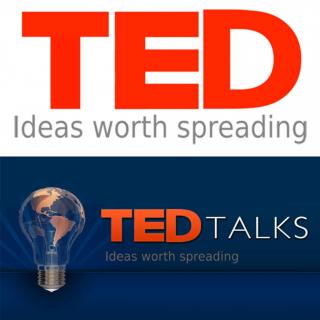
介绍:
Melissa Marshall: Talk nerdy to me
荔枝,轻点
同步微信公众号:Ereadingme 英语朗读原创 /同步q群 英语-热点-朗读 433924484/
希望大家多多支持,love you all【heart】
Five years ago, I experienced a bit of what it must have been like to be Alice in Wonderland. Penn State asked me, a communications teacher, to teach a communications class for engineering students. And I was scared. (Laughter) Really scared. Scared of these students with their big brains and their big books and their big, unfamiliar words. But as these conversations unfolded, I experienced what Alice must have when she went down that rabbit hole and saw that door to a whole new world. That's just how I felt as I had those conversations with the students. I was amazed at the ideas that they had, and I wanted others to experience this wonderland as well. And I believe the key to opening that door is great communication.
0:58
We desperately need great communication from our scientists and engineers in order to change the world. Our scientists and engineers are the ones that are tackling our grandest challenges, from energy to environment to health care, among others, and if we don't know about it and understand it, then the work isn't done, and I believe it's our responsibility as non-scientists to have these interactions. But these great conversations can't occur if our scientists and engineers don't invite us in to see their wonderland. So scientists and engineers, please, talk nerdy to us.
1:34
I want to share a few keys on how you can do that to make sure that we can see that your science is sexy and that your engineering is engaging. First question to answer for us: so what? Tell us why your science is relevant to us. Don't just tell me that you study trabeculae, but tell me that you study trabeculae, which is the mesh-like structure of our bones because it's important to understanding and treating osteoporosis.
2:02
And when you're describing your science, beware of jargon. Jargon is a barrier to our understanding of your ideas. Sure, you can say "spatial and temporal," but why not just say "space and time," which is so much more accessible to us? And making your ideas accessible is not the same as dumbing it down. Instead, as Einstein said, make everything as simple as possible, but no simpler. You can clearly communicate your science without compromising the ideas. A few things to consider are having examples, stories and analogies. Those are ways to engage and excite us about your content. And when presenting your work, drop the bullet points. Have you ever wondered why they're called bullet points? (Laughter) What do bullets do? Bullets kill, and they will kill your presentation. A slide like this is not only boring, but it relies too much on the language area of our brain, and causes us to become overwhelmed. Instead, this example slide by Genevieve Brown is much more effective. It's showing that the special structure of trabeculae are so strong that they actually inspired the unique design of the Eiffel Tower. And the trick here is to use a single, readable sentence that the audience can key into if they get a bit lost, and then provide visuals which appeal to our other senses and create a deeper sense of understanding of what's being described.
3:32
So I think these are just a few keys that can help the rest of us to open that door and see the wonderland that is science and engineering. And because the engineers that I've worked with have taught me to become really in touch with my inner nerd, I want to summarize with an equation. (Laughter) Take your science, subtract your bullet points and your jargon, divide by relevance, meaning share what's relevant to the audience, and multiply it by the passion that you have for this incredible work that you're doing, and that is going to equal incredible interactions that are full of understanding. And so, scientists and engineers, when you've solved this equation, by all means, talk nerdy to me. (Laughter) Thank you. (Applause)
大家还在听

